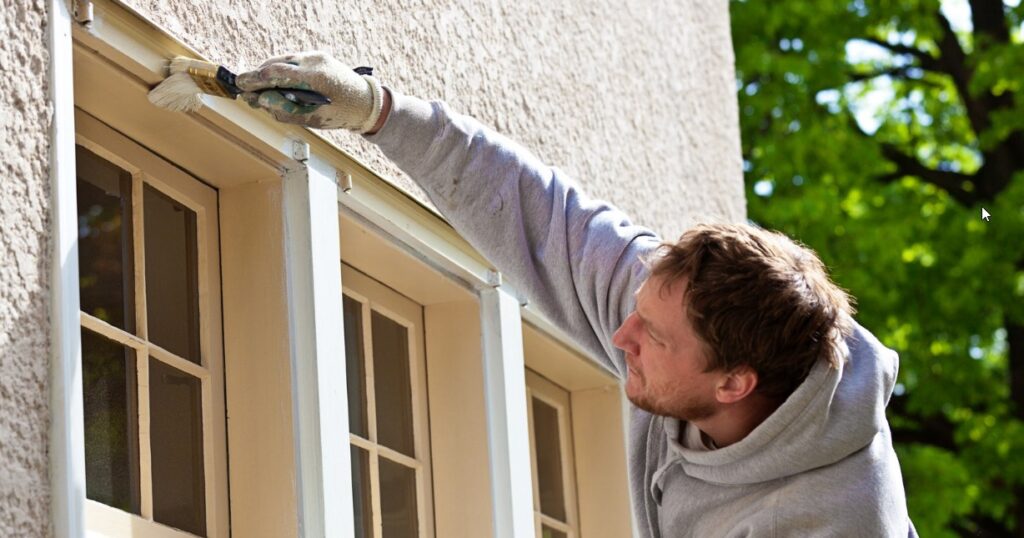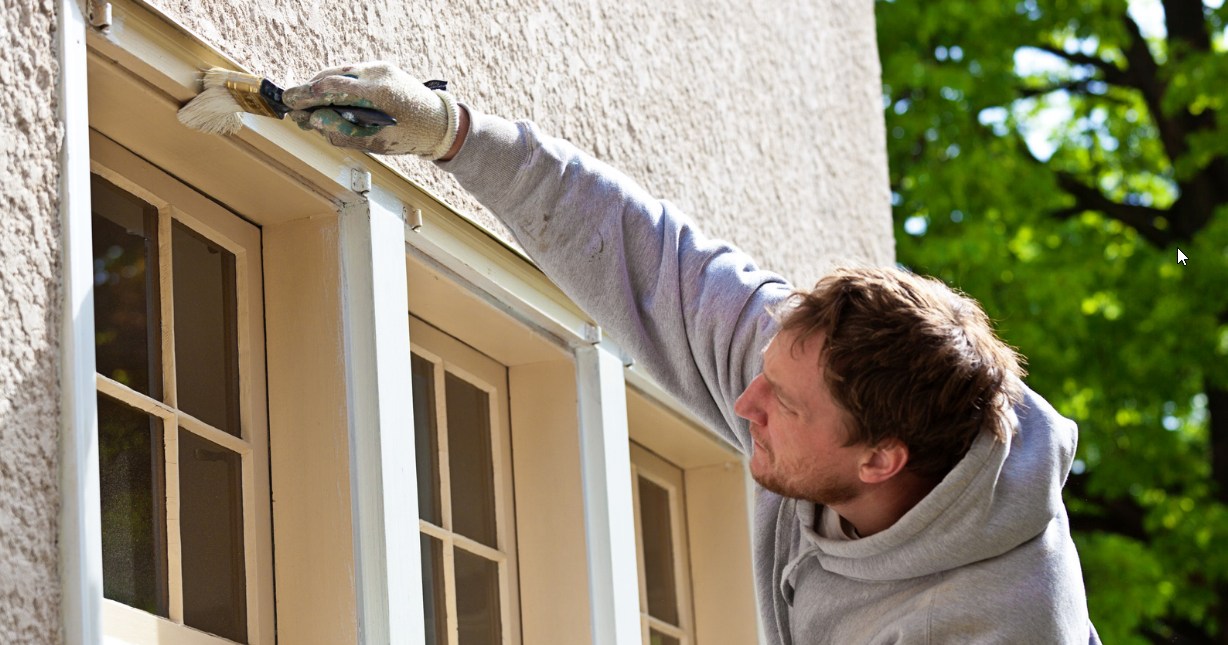When it comes to exterior painting of your home, timing is everything. The weather and seasonal conditions play a critical role in how well exterior paint adheres, cures, and ultimately, how long it lasts. From extreme temperatures to fluctuating humidity, Canada’s varying climates can significantly impact your painting project’s success.
Many homeowners have questions about the best time to tackle an exterior painting job. “Can I paint in spring when the snow melts?” or “Is summer too hot for the paint to dry properly?” are common concerns. Understanding how weather influences paint performance is key to achieving a flawless and long-lasting finish. This guide explores why timing matters and helps you determine the ideal season to refresh your home’s exterior painting.
Why Timing Matters for Exterior Painting
Timing is critical when it comes to exterior painting, as it directly impacts the quality, durability, and appearance of the final result. Here’s why it matters:
- Temperature and Humidity Impact Paint Adhesion and Drying: Paint needs specific conditions to properly adhere to surfaces and dry evenly. If it’s too hot, the paint can dry too quickly, causing uneven layers or brush marks. On the other hand, extremely cold temperatures can prevent the paint from setting correctly, leading to poor adhesion. Similarly, high humidity levels slow down the drying process, increasing the risk of streaking or imperfections.
- Risks of Exterior Painting in Poor Conditions: Exterior Painting in unfavourable weather conditions can lead to costly and time-consuming problems. For instance, applying paint on damp or rainy days can result in peeling and blistering as the moisture gets trapped beneath the surface. Extreme sun exposure can cause cracks and fading over time, reducing the lifespan of the paint job. These risks emphasize the importance of checking weather forecasts and avoiding extreme temperatures or wet environments.
- Moisture Levels and Weather Stability are Key: Before beginning any exterior painting project, it’s crucial to ensure the surface is completely dry and free from moisture. Painting on surfaces that are even slightly wet, whether from dew, rain, or pressure washing, can compromise the bond between the paint and the surface. Additionally, stable weather conditions over several days are ideal for allowing multiple coats of paint to dry and cure properly, ensuring a long-lasting and professional finish.
Canadian Climate Considerations
When exterior painting in Canada, and particularly in Alberta, unique climate challenges must be addressed to achieve the best results. Alberta experiences extreme freeze/thaw cycles, which can cause surfaces to expand and contract, potentially leading to cracks or peeling paint over time. Wet springs often bring higher humidity levels, and painting during these conditions can slow down drying and curing times, increasing the risk of improper adhesion. Conversely, Alberta’s dry summers provide generally favourable conditions for painting, but high temperatures and strong sunlight can cause paint to dry too quickly, resulting in uneven finishes.
To account for these factors, it’s essential to monitor long-range weather forecasts before starting a project. Aim to work during a stable stretch of dry, mild weather, ideally avoiding periods of high humidity, extreme heat, or any risk of frost. This proactive approach ensures that the paint performs as intended, delivering a durable and visually appealing finish that can withstand Alberta’s demanding climate.
Exterior Painting Seasonal Breakdown: Pros and Cons of Each Season
When it comes to exterior painting, choosing the right season can make all the difference. Weather conditions directly influence how paint adheres, dries, and cures, so understanding the pros and cons of each season will help you plan your project effectively.
Spring
- Pros:
- Mild temperatures and longer daylight hours make spring an appealing season to start painting projects.
- Humidity levels are often optimal, promoting proper curing without drying too fast or too slow.
- Cons:
- Spring weather can be unpredictable, with sudden rain, storms, or temperature drops that can disrupt your project.
- Thawing moisture in the air and on surfaces can lead to uneven drying or poor adhesion.
- Tips:
- Wait until temperatures consistently stay above 10°C (50°F) to ensure the paint can cure properly.
- Always check that the surfaces you’re painting are completely dry to avoid peeling or bubbling.
- Monitor the forecast carefully and plan around potential rain to avoid interruptions.
Summer
- Pros:
- Dry and sunny weather makes summer one of the best seasons for painting, as surfaces tend to dry quickly and stay clean from moisture.
- Longer daylight hours mean you have more time to finish projects.
- Cons:
- Extreme heat or heat waves can cause paint to dry too quickly, leading to visible brush strokes, uneven finishes, or cracking.
- Direct sunlight on surfaces can heat them, making it difficult for the paint to adhere properly.
- Tips:
- Plan to paint during the cooler parts of the day, such as early mornings or late afternoons, to avoid direct sunlight and excessive heat.
- Use paint specifically designed for hot weather if you’re working in higher temperatures.
- Keep your workspace ventilated and hydrated if painting indoors during the summer.
Fall
- Pros:
- Cooler, stable weather conditions in early fall provide an ideal environment for painting, as temperatures are not too hot or cold.
- Humidity levels are lower compared to summer, which helps the paint dry evenly.
- Cons:
- The window of opportunity is shorter, as temperatures can drop quickly toward the end of the season.
- Shorter daylight hours limit the amount of time available for outdoor projects.
- Tips:
- Paint early in the season while temperatures still hover above 10°C (50°F) for optimal results.
- Start your project earlier in the day to make the most of the available sunlight.
- Be cautious of nighttime temperatures, as significant drops can affect curing.
Winter (Generally not recommended)
- Pros:
- Painting indoors is an option during winter, especially for smaller projects or touch-ups.
- Cons:
- Cold temperatures, snow, ice, and frozen surfaces make winter an unfavourable season for outdoor painting.
- Most paints are not designed to cure properly below 10°C (50°F), leading to poor adhesion, uneven finishes, or peeling.
- Humidity caused by indoor heating can also impact paint performance.
- Why to Avoid:
- Freezing temperatures can ruin your paint, making it thick or unusable.
- Frost and condensation on surfaces can prevent the paint from adhering, causing long-term damage.
- Exceptions:
- Use specialized cold-weather paints designed to cure at temperatures as low as 2-5°C (35-41°F), but keep in mind that their application comes with limitations.
- Protect outdoor areas with temporary coverings or heaters, but this may increase costs and complexity.
- Winter painting is best reserved for interior work, provided the space is well-ventilated to avoid fumes.
Professional vs. DIY: Timing and Technique

When it comes to achieving a high-quality, long-lasting paint job, the choice between hiring professionals and going the DIY route can make all the difference. Timing and technique play a critical role in ensuring the best results, and this is where the expertise of professionals truly shines.
Why Hiring Professionals Ensures Optimal Scheduling and Application
Professional painters have the experience and knowledge to plan every step of the process, from selecting the right type of paint to determining the perfect time to apply it. Timing is crucial in painting projects, as factors like humidity, temperature, and weather conditions can greatly affect the outcome. Professionals ensure that the job is scheduled during optimal conditions, avoiding issues like premature drying, cracking, or uneven finishes.
Common Mistakes DIYers Make by Painting in Poor Conditions
DIYers often overlook the importance of timing and technique, leading to common mistakes that compromise the quality of the project. Painting in poor weather conditions, such as during high humidity or extreme temperatures, can result in peeling, bubbling, or streaking. Skipping essential steps like surface cleaning or not using primers can also lead to uneven coverage and a lack of durability. Without the proper tools and expertise, DIY projects can quickly become frustrating, time-consuming, and more expensive in the long run.
By hiring professionals, you not only save time and effort but also gain peace of mind knowing that your project will be completed with precision, care, and attention to detail. Trust the experts to deliver results that exceed expectations every time.
How to Tell If Your Home Needs Repainting
Keeping your home’s paint in good condition is essential for both curb appeal and protection against the elements. But how do you know when it’s time to repaint? Here are some key indicators and factors to consider:
1. Look for Visual Signs of Wear
Over time, your home’s exterior paint will show clear signs of deterioration. Some things to watch for include:
- Fading: If the paint colour looks dull or washed out, especially on areas exposed to harsh sunlight, it’s a sign the paint has lost its protective qualities.
- Chalking: A powdery residue on the surface of the paint is a sign of aging and weathering.
- Peeling or Cracking: Paint that is peeling, cracking, or bubbling indicates that moisture may have penetrated the surface, potentially leading to damage underneath.
- Bare Wood or Exposed Material: If you can see bare siding or wood beneath the paint, it’s time to act quickly to prevent further deterioration.
2. Consider the Timeline
Paint doesn’t last forever, and the lifespan of your home’s exterior painting depends on factors like climate, materials, and the quality of the paint used. A general guideline is:
- Every 5–7 Years: Homes in areas with extreme weather conditions or harsh sunlight may need more frequent repainting.
- Every 8–10 Years: For homes in milder climates or those with high-quality paint, the timeline may extend slightly.
3. Inspect High-Wear Areas
Certain parts of your home are more prone to wear and tear. Pay special attention to:
- Siding: Look for fading, cracks, or damage on your home’s main exterior surface.
- Trim and Window Frames: These areas experience frequent exposure to moisture and may show peeling or cracking sooner than other parts.
- Doors and Entryways: The paint on high-contact areas like doors can wear out faster due to regular use.
4. Factor in Aesthetic Updates
Even if the paint hasn’t deteriorated, you may want to repaint to refresh the look of your home. Changing the colour or simply giving it a clean, updated coat can significantly boost curb appeal and increase property value.
5. Protect Your Home’s Structure
Repainting isn’t just about aesthetics—it’s about safeguarding your home. Paint acts as a barrier against moisture, UV rays, and other environmental factors. Ignoring the need for repainting can lead to bigger, more expensive issues like wood rot, water damage, or mould growth.
Conclusion
Repainting your home is more than just a cosmetic upgrade—it’s an essential part of maintaining and protecting your property. Whether you’re enhancing curb appeal, increasing property value, or protecting your home’s structure from the elements, a fresh coat of paint goes a long way. Don’t ignore the signs that it’s time to repaint. Investing in this project now can save you from more significant issues down the road and ensure your home looks its best for years to come.
Looking to give your home’s exterior a fresh new look? GPS Alberta provides professional exterior painting services designed to deliver stunning, long-lasting results. Visit our Contact Page for more information and reach out today for a free consultation and quote!


